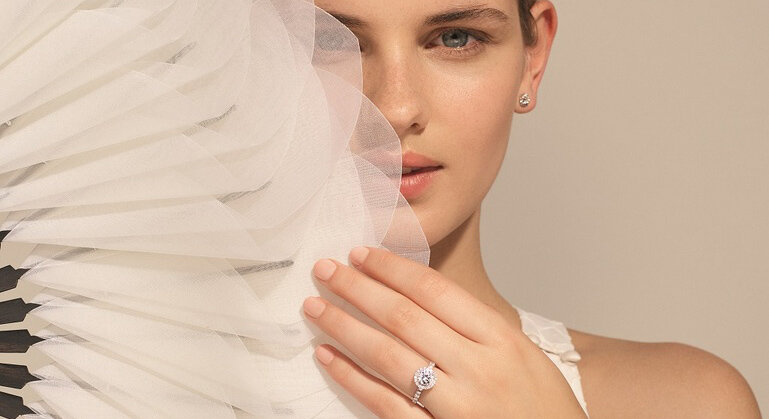To grow diamonds in a laboratory and to recycle gold from electronic devices to create more ethical jewels, such is the bet of the French maison Courbet, in order to limit its environmental footprint. Explanations with Charlotte Daehn, head of public relations at Courbet, met on January 30 in Paris, in the sustainable fashion space of the Change Now summit, dedicated to innovative solutions for the ecological transition.
By Ludmilla Intravaia
Le Boudoir Numérique : You use diamonds grown in laboratory, rather than diamonds extracted from the ground, in industrial mines, to create your jewellery. How are diamonds grown ?
Charlotte Daehn, head of public relations at Courbet : Two technologies are used to grow these diamonds which have the same physical, chemical and optical properties as mined diamonds. HPHT (High Pressure, High Temperature) technology reproduces the conditions in which diamonds formed deep within the earth, billions of years ago, while the second, CVD (Chemical Vapor Deposition) technology replicates the conditions in which they form in the universe. Scientists have found diamonds in meteorites, which shows that they do not necessarily originate in the depths of our planet but also in space. With CVD technology, the diamonds are created in a low-pressure atmosphere using hydrogen plasma, which causes the carbon atoms to crystallise into diamond. It is the technology used by one of our suppliers, the French laboratory Diam Concept, founded by CNRS researcher Alix Gicquel who has dedicated her life to diamonds. With these diamonds made in France, in the region of Paris, we have just launched a jewellery capsule collection, called Pont des arts.
Ring Pont des arts by Courbet (©Courbet)
From an ecological point of view, what are the advantages of a lab-grown diamond ?
The impact of a grown diamond is more limited on the environment, since the production in a laboratory of a 1 karat diamond consumes approximately 50 kilos of carbon dioxide, versus 160 kilos of CO2, for an equivalent mined diamond. To find a 1 karat diamond, you go as far as extracting 250 tonnes of ore, which generates huge dust clouds and a huge waste of energy. Industrial mines cause site pollution, deforestation and animal deplacement, not to mention poor human working conditions. Grown diamonds allow traceability and transparency, shorter circuits, with fewer intermediaries, which is also a huge asset. Likewise, we use 18 karat gold recycled by the company Agosi, from obsolete computer and industrial equipment, which again avoids pollution from natural extraction, promotes traceability and the use of already existing resources.
Diamond lab (© Courbet)
Can you be defined as a technological jeweller ?
We see ourselves rather as a traditional jeweller who takes advantage of technological advances to reduce its ecological footprint, to offer a new way of consuming, more serene. If we have chosen to work, in a disruptive way, with diamonds produced in laboratory by high-tech processes, we keep an infinite admiration for the fine jewellery maisons, whose old skills we perpetuate in the creation of our jewellery. We embody a positive alternative, capable of responding to the environmental concerns of our customers, especially young generations, in search of transparency and ethics.
* Courbet jewels are available at the jeweller's apartment at 7 place Vendôme, 75001 Paris (by appointment), in the dedicated boutique of the Printemps Haussmann department store, in the 9th arrondissement of Paris and on the Courbet website, to discover here.
* Diam Concept's website is here and Agosi's is there.
* Change Now, the international Summit for Change displaying solutions for the planet, took place from January 30 to February 1, 2020, at Grand Palais, in Paris. Change Now website is there.
* Read more on Change Now with this Boudoir Numérique paper : “Our stitching thread melts at high temperature”.



